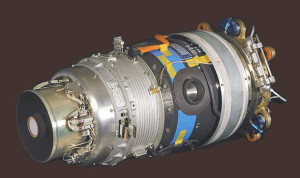
The advanced Standaard missile 3 (SM-3) Block 1B failed its first intercept test yesterday in a ballistic missile intercept test conducted by the U.S. Missile Defense Agency (MDA). The test was conducted yesterday over the Pacific Ocean, exercising the sea-based element of the Ballistic Missile Defense System (BMDS).
Early indications from the test suggest that the Aegis 4.0.1 processor worked flawlessly, as did the telemetry, tracking, and surveillance data. MDA will proceed with further investigation will to determine the cause of the failure to intercept.

The target, a short range ballistic missile was launched from the U.S. Navy Pacific Missile Range Facility (PMRF) in Kauai, Hawaii. The target was detected and acquired by the BMD ready cruiser, USS Lake Erie (CG-70). 90 seconds later the cruiser launched an SM-3 Block 1B missile at the target, but the interceptor failed to hit the target.
“As the sophistication of the threat missiles from Iran and North Korea continues to advance and be demonstrated, so must our nation’s missile defense ability to counter and stay ahead of those threats” commented Riki Ellison,
Chairman & Founder of the Missile Defense Advocacy Alliance. “Risk is inherent in keeping ahead of the threat. The failure of this new missile in its first intercept test within a highly successful and proven Aegis Ballistic Missile Defense System should be acknowledged as a risk acceptance when expanding capability to be more robust than the missile it is replacing” he added.
Since the beginning of flight testing of sea-based BMD in 2002 all missile intercepts under the naval BMD program were conducted with SM-3 Block 1A interceptors, achieving 22 hits out of 27 launches. The missile was also used in the intercept and destruction of a malfunctioning U.S. satellite in February 2008.

The new block currently being tested incorporates an upgraded two-color seeker and advanced signal processor, enabling longer range target acquisition and increased threat discrimination, to better discriminate between targets and decoys, improving infra-red target acquisition. This seeker will be also employed with the Block II high velocity variant. The enhanced Block 1B interceptor has also upgraded from solid to solid-Throttleable Divert Attitude Control System (TDACS). The U.S. and Japan are also co-developing another version of the missile, known as Block IIA. Raytheon, the missile manufacturer has won a $321 million MDA award earlier this year, funding the manufacturing of 24 Block IB missiles by over the next 27 months by mid 2013.
Apart from the sea-based BMD, the SM-3 is being prepared for land-based positioning in Europe toward 2015. A new test facility for the Aegis Ashore Missile Defense Test Complex (AAMDTC) was recently inaugurated in Hawaii, to support President Obama ‘Phased Adaptive Approach’ (PAA) for missile defense in support of Europe, South Korea and protecting U.S. forces deployed in theater. The test complex at PMRF is critical to the development of the Aegis Ashore capability. It is essential for verifying requirements and validating design capability prior to deployment at the first of two planned sites in Europe in 2015.
















